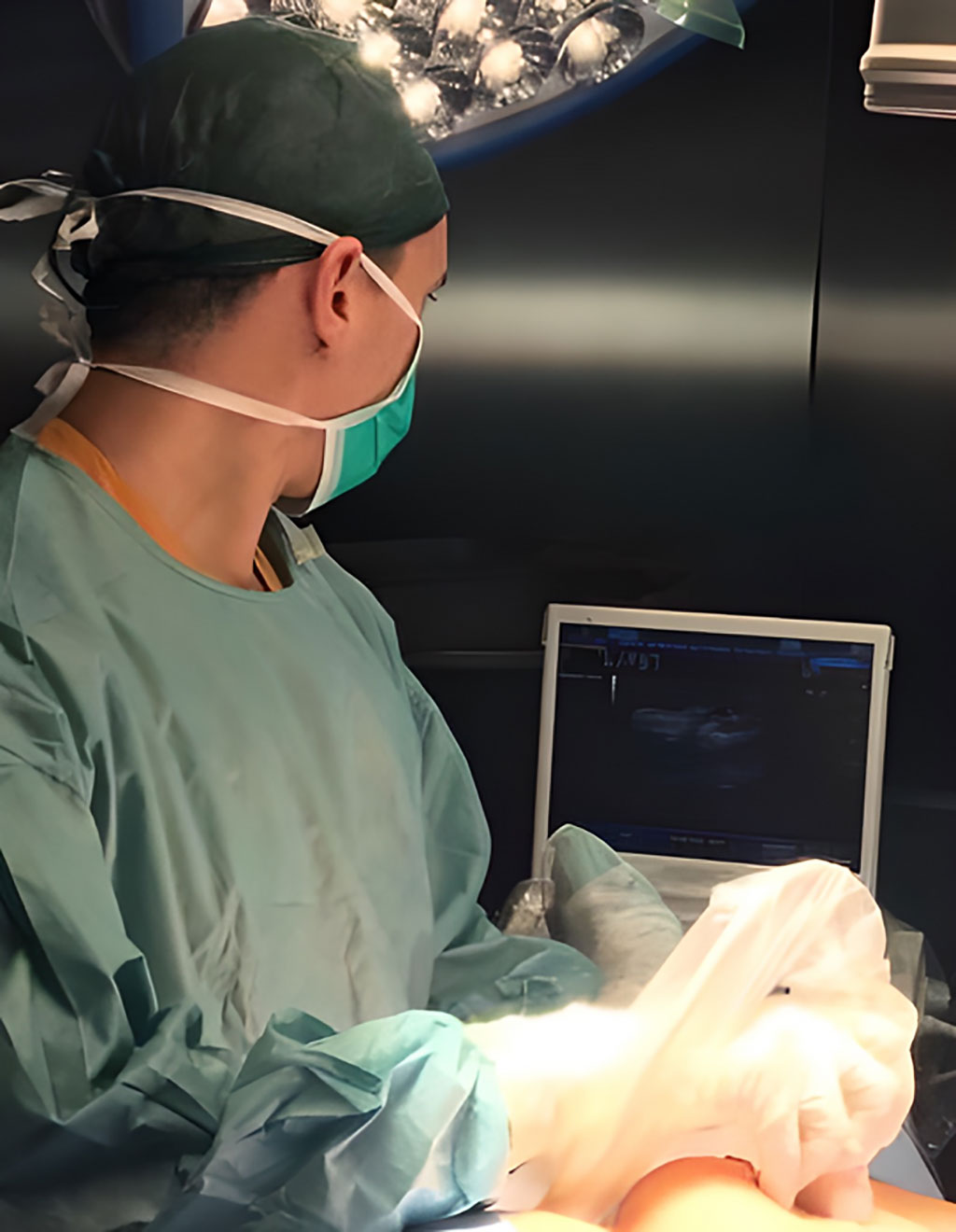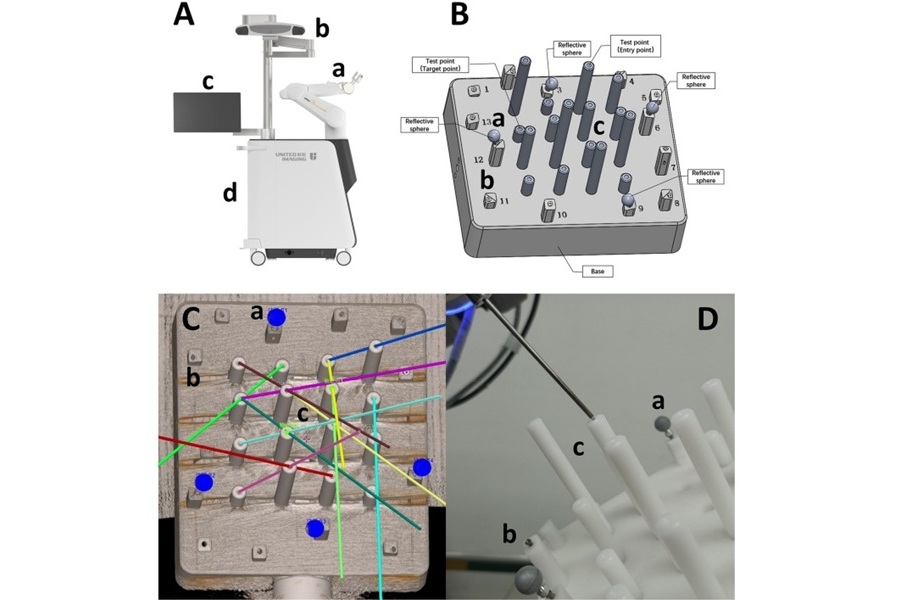Ultrasound-Guided Surgery More Effective for Treating Early Form of Breast Cancer
|
By HospiMedica International staff writers Posted on 21 Nov 2022 |

Using ultrasound to guide surgery for patients with ductal carcinoma in situ (DCIS) gives better results than the standard technique of using a wire inserted into the breast, according to new research. The technique, known as intraoperative ultrasound, or IOUS, enables surgeons to remove a smaller quantity of breast tissue, while still removing all the of DCIS tissue. Using IOUS improves the chance of having no cancer cells at the outer edge of the tissue that was removed (known as positive margins), reducing the risk of patients needing a second operation. Because IOUS negates the need for inserting a guide wire, this technique could also reduce pain and preoperative stress for patients and save time for medical staff.
The research carried out by a team at Clinica Universidad de Navarra (Madrid, Spain) involved 108 people who were diagnosed with DCIS and treated between February 2018 and December 2021. Forty-one were treated with IOUS-guided surgery while 67 were treated with surgery guided by wire localization (WL). Following each operation, the tissue removed was analyzed to see how much was removed and whether there were ‘positive margins’. This means that DCIS cells were found at the edge of the tissue removed, suggesting some DCIS cells could have been left behind and patients would probably need a second operation.
Among those treated using WL, seven (10.4%) had positive margins and needed a second operation while in those treated using IOUS, there were only two patients (4.8%) with positive margins who needed a second operation. The patients have been followed up for a year and half so far and cancer has only recurred in one (who was treated with WL). The researchers plan to continue gathering information about patients having surgery for DCIS in the hopes of seeing long-term benefits of using IOUS.
“DCIS is a common form of early breast cancer that can develop into a more serious, invasive cancer. To ensure it does not progress, patients are usually offered surgery. Because DCIS does not usually create lumps in the breast, we need a good technique to guide surgery and make it accurate as possible,” said Dr. Antonio J. Esgueva at Clinica Universidad de Navarra. “As breast surgeons, we want to perform the very best oncological surgery in terms of removing any trace of DCIS but also removing as little of the breast tissue as possible in order to have the best cosmetic result possible. At the same time, we also want to improve patients' experience during treatment by using less invasive techniques and reducing their anxiety. Our research suggests that using intraoperative ultrasound, a quicker and less invasive technique, is effective for guiding DCIS surgery.”
“Once intervention is planned, the standard treatment for patients diagnosed with DCIS is surgery. The need for a second operation due to positive margins can be an issue. This research is promising because it shows that a kinder technique can help guide surgeons to effectively remove DCIS from the breast while minimising unwanted side-effects,” added Dr. Laura Biganzoli, Co-Chair of the European Breast Cancer Conference and Director of the Breast Centre at Santo Stefano Hospital, Prato, Italy, who was not involved in the research.
Related Links:
Clinica Universidad de Navarra
Latest Surgical Techniques News
- Groundbreaking Procedure Combines New Treatments for Liver Tumors
- Ablation Reduces Stroke Risk Associated with Atrial Fibrillation
- Optical Tracking Method Identifies Target Areas in Robot-Assisted Neurosurgery
- General Anesthesia Improves Post-Surgery Outcomes for Acute Stroke Patients
- Drug-Coated Balloons Can Replace Stents Even in Larger Coronary Arteries
- Magnetic Kidney Stone Retrieval Device Outperforms Ureteroscopic Laser Lithotripsy
- Absorbable Skull Device Could Replace Traditional Metal Implants Used After Brain Surgery
- Magic Silicone Liquid Powered Robots Perform MIS in Narrow Cavities
- 'Lab-on-a-Scalpel' Provides Real-Time Surgical Insights for POC Diagnostics in OR
- Biodegradable Brain Implant Prevents Glioblastoma Recurrence
- Tiny 3D Printer Reconstructs Tissues During Vocal Cord Surgery
- Minimally Invasive Procedure for Aortic Valve Disease Has Similar Outcomes as Surgery
- Safer Hip Implant Design Prevents Early Femoral Fractures
- New Nanomaterial Improves Laser Lithotripsy for Removing Kidney Stones
- Ultraflexible Neurovascular Microcatheter Delivers Therapies to Tiniest Blood Vessels

- Magnetic Soft Robotic Valve Provides Minimally Invasive Intervention for Acid Reflux
Channels
Critical Care
view channel
Smart Nanomaterials Detect and Treat Traumatic Brain Injuries Simultaneously
Traumatic brain injury (TBI) continues to leave millions with long-term disabilities every year. After a sudden impact from a fall, collision, or accident, the brain undergoes inflammation, oxidative stress,... Read more
Earlier Blood Transfusion Could Reduce Heart Failure and Arrhythmia in Heart Disease Patients
Blood loss during or after surgery can place significant stress on people with heart disease, increasing the risk of dangerous complications. Transfusions are often delayed until hemoglobin levels fall... Read moreSurgical Techniques
view channelGroundbreaking Procedure Combines New Treatments for Liver Tumors
Removing or destroying liver tumors often requires patients to undergo two separate procedures, exposing them to multiple hospital stays, repeated anesthesia, and longer recovery times. Traditional approaches... Read moreAblation Reduces Stroke Risk Associated with Atrial Fibrillation
Atrial fibrillation (AFib) greatly increases the risk of stroke, blood clots, heart failure, and death, and millions of people in the U.S. are expected to be affected in the coming years.... Read morePatient Care
view channel
Revolutionary Automatic IV-Line Flushing Device to Enhance Infusion Care
More than 80% of in-hospital patients receive intravenous (IV) therapy. Every dose of IV medicine delivered in a small volume (<250 mL) infusion bag should be followed by subsequent flushing to ensure... Read more
VR Training Tool Combats Contamination of Portable Medical Equipment
Healthcare-associated infections (HAIs) impact one in every 31 patients, cause nearly 100,000 deaths each year, and cost USD 28.4 billion in direct medical expenses. Notably, up to 75% of these infections... Read more
Portable Biosensor Platform to Reduce Hospital-Acquired Infections
Approximately 4 million patients in the European Union acquire healthcare-associated infections (HAIs) or nosocomial infections each year, with around 37,000 deaths directly resulting from these infections,... Read moreFirst-Of-Its-Kind Portable Germicidal Light Technology Disinfects High-Touch Clinical Surfaces in Seconds
Reducing healthcare-acquired infections (HAIs) remains a pressing issue within global healthcare systems. In the United States alone, 1.7 million patients contract HAIs annually, leading to approximately... Read moreHealth IT
view channel
Printable Molecule-Selective Nanoparticles Enable Mass Production of Wearable Biosensors
The future of medicine is likely to focus on the personalization of healthcare—understanding exactly what an individual requires and delivering the appropriate combination of nutrients, metabolites, and... Read moreBusiness
view channel
Philips and Masimo Partner to Advance Patient Monitoring Measurement Technologies
Royal Philips (Amsterdam, Netherlands) and Masimo (Irvine, California, USA) have renewed their multi-year strategic collaboration, combining Philips’ expertise in patient monitoring with Masimo’s noninvasive... Read more
B. Braun Acquires Digital Microsurgery Company True Digital Surgery
The high-end microsurgery market in neurosurgery, spine, and ENT is undergoing a significant transformation. Traditional analog microscopes are giving way to digital exoscopes, which provide improved visualization,... Read more
CMEF 2025 to Promote Holistic and High-Quality Development of Medical and Health Industry
The 92nd China International Medical Equipment Fair (CMEF 2025) Autumn Exhibition is scheduled to be held from September 26 to 29 at the China Import and Export Fair Complex (Canton Fair Complex) in Guangzhou.... Read more
















